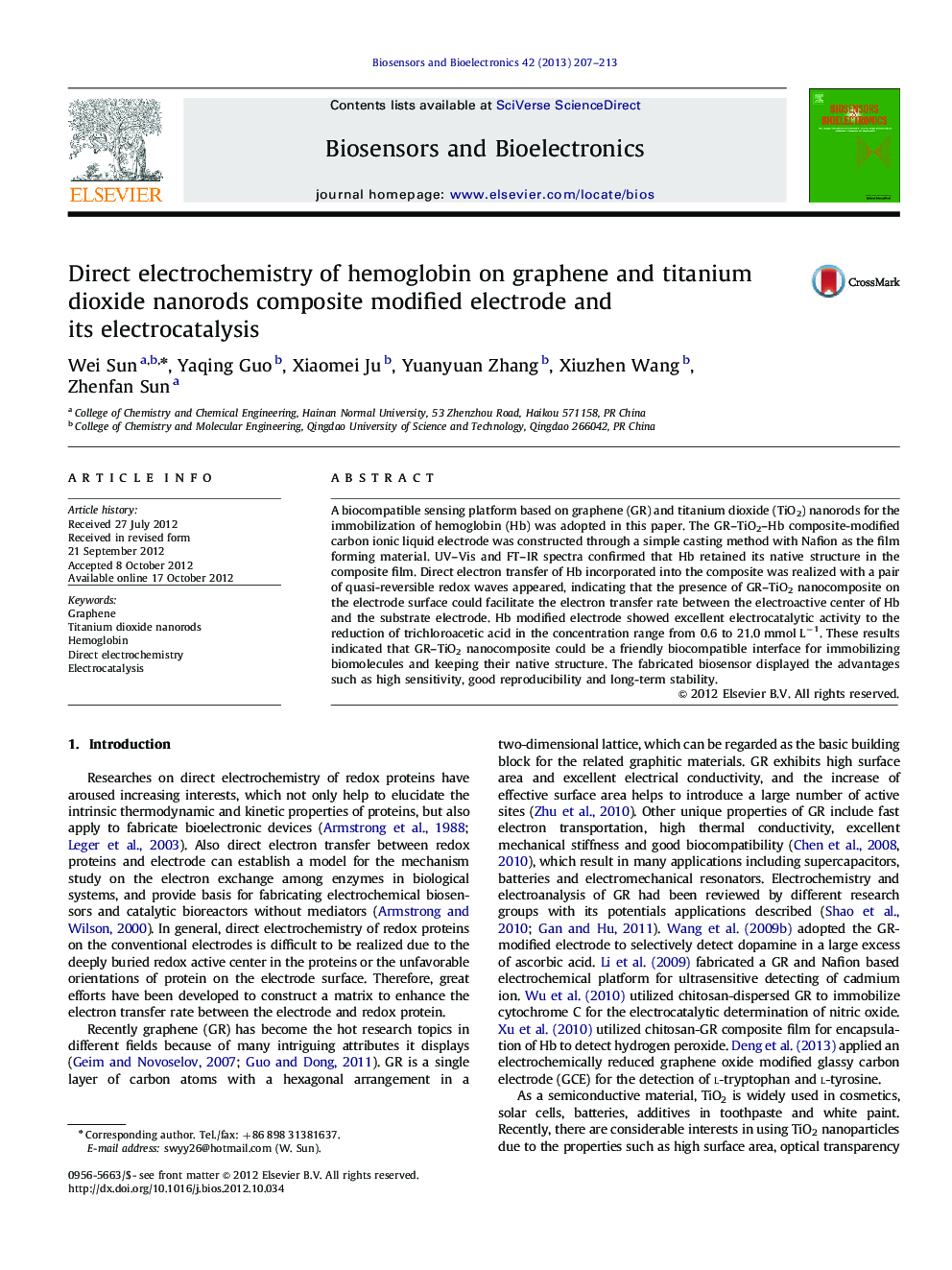| Article ID | Journal | Published Year | Pages | File Type |
|---|---|---|---|---|
| 867094 | Biosensors and Bioelectronics | 2013 | 7 Pages |
A biocompatible sensing platform based on graphene (GR) and titanium dioxide (TiO2) nanorods for the immobilization of hemoglobin (Hb) was adopted in this paper. The GR–TiO2–Hb composite-modified carbon ionic liquid electrode was constructed through a simple casting method with Nafion as the film forming material. UV–Vis and FT–IR spectra confirmed that Hb retained its native structure in the composite film. Direct electron transfer of Hb incorporated into the composite was realized with a pair of quasi-reversible redox waves appeared, indicating that the presence of GR–TiO2 nanocomposite on the electrode surface could facilitate the electron transfer rate between the electroactive center of Hb and the substrate electrode. Hb modified electrode showed excellent electrocatalytic activity to the reduction of trichloroacetic acid in the concentration range from 0.6to 21.0 mmol L−1. These results indicated that GR–TiO2 nanocomposite could be a friendly biocompatible interface for immobilizing biomolecules and keeping their native structure. The fabricated biosensor displayed the advantages such as high sensitivity, good reproducibility and long-term stability.
► 1-butylpyridinium hexafluorophosphate based carbon paste electrode was prepared. ► Graphene and TiO2 nanorods nanocomposite was prepared for the immobilization of hemoglobin. ► Direct electrochemistry of hemoglobin was realized. ► Electrocatalysis to the reduction of trichloroacetic acid was investigated.
